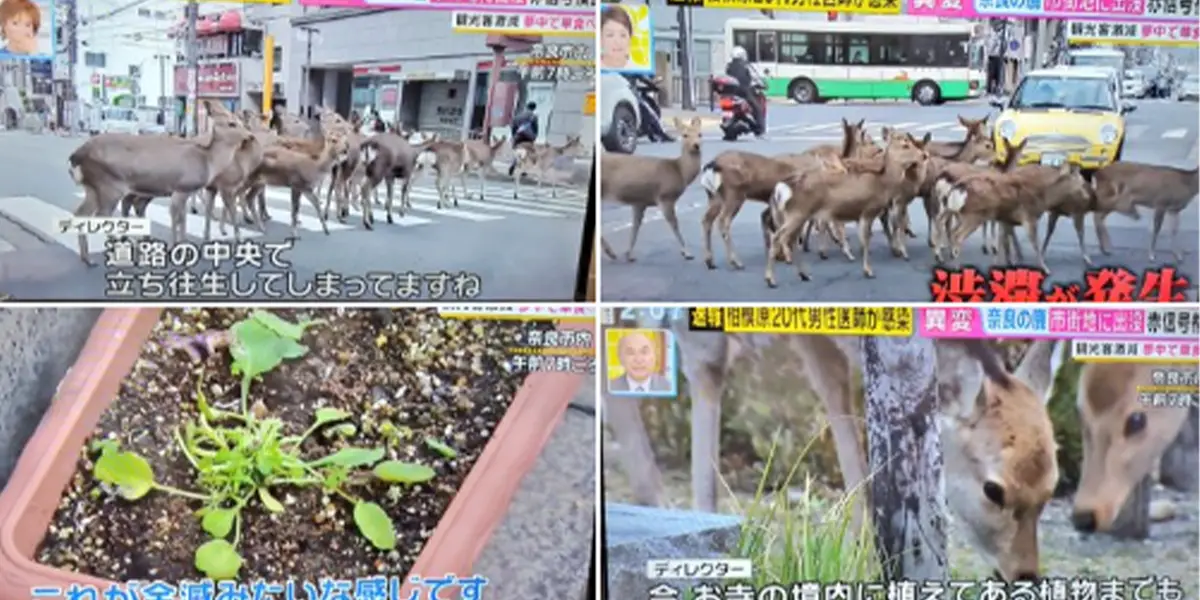Wild Animals Are Being Spotted Braving City Streets

As coronavirus lockdowns and quarantines have quietened city streets worldwide, sightings of wild animals in urban areas are increasing.
Across the globe, cities are eerily peaceful. And with fewer vehicles and fewer people around, rarely-sighted wild animals are popping up with more frequency in city environments.
Less tourists in Nara = less people feeding the deer in the parks 🌷🌱 Now they’re venturing out into the city eating flowers and plants, per Fuji TV #coronavirus#新型コロナウイルス の影響で海外観光客の減少が続く奈良公園で、鹿せんべいをもらえなくなってしまったシカちゃん達 😢 pic.twitter.com/yUFWJ4S9sj
— Kurumi Mori (@rumireports) March 6, 2020
Deer, raccoons, peacocks, turkeys…
There have been unreal shots of wild animals captured on camera in the streets, including Bambi-like sika deer in Nara, Japan.
Wild boars have been seen in the cobbled streets of Barcelona. In Madrid, peacocks have been wandering along what are usually busy roads.
There were reports of raccoons playing on a beach in San Felipe, Panama. And of turkeys strolling around neighborhoods in Oakland, California.
It should be noted that some reports, including those of dolphins swimming in Venice’s canals, have been fake.
Although wild animal sightings in city environments have been few and far between in the past, that doesn’t mean they are new to the area.
Director of the Urban Wildlife Institute at the Lincoln Park Zoo in Chicago, Seth Magle, told the Guardian:
“Normally, animals live in the parts of our cities that we don’t use,” he said. “It makes them an unseen presence, kind of like ghosts.”
Spotted on the playground at the elementary school next door, which has been closed for several days … wild turkeys! That’s a first. #coronavirus #westoakland pic.twitter.com/tGA4y1l09c
— Charlotte Simmonds (@CharSimmonds) March 20, 2020
Fewer humans equals less food
There is the likelihood that increased sightings do not mean that animals are purely enjoying the relative peace and quiet.
That’s because some of them have become accustomed to subsisting off humans – being directly fed, or relying on trash.
For example, footage in Lopburi, Thailand, has shown monkeys fighting over what looks like a yogurt tub. This was after the coronavirus had cleared out all the tourists.
The deer in Japan are believed to be a similar case – usually, visitors to Nara Park flock to feed these captivating creatures.
Even so, rare sightings of wild animals in city environments are offering people something to smile about in a time of global upheaval.
“There were three raccoons, just frolicking along right at the edge of the surf. It was nice to see something a little out of the ordinary,” said Matt Larsen, of the Smithsonian Tropical Research Institute in Panama.
It’s also a reminder to us all that we are sharing our cities with many other species. And that we should take measures to accommodate and preserve this co-existence as best we can.
Read more: In The Midst Of A Tragic Human Pandemic, The Environment Is Flourishing
Leave Comment: